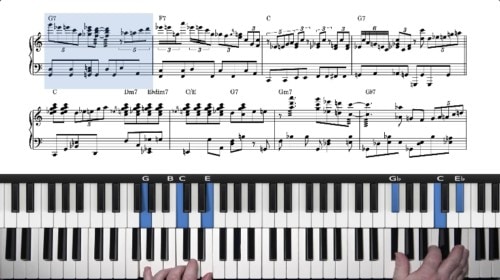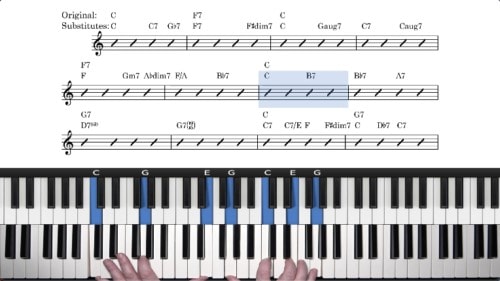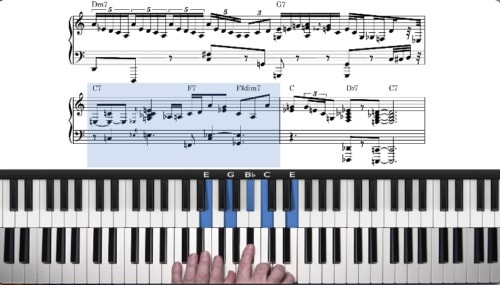How To Play A Blues Shuffle
In this lesson Jon gives us an overview of what it means to play the blues and guides us through the role of the left hand in a 12 bar blues setting.
You will learn how to play a blues shuffle, some simple bass line examples, and we will discuss and demonstrate the role of swing feel in our left hand shuffle patterns.
Using The Blue Notes
“The blues” is a loose term that has been used to describe many styles of playing. One thing common to most blues styles is the use of “blue notes”. This is a form of controlled dissonance, i.e. using notes that sound out of tune.

In the key of C, these would be the flat keys, most importantly Eb. On the piano we can play these flat notes and slide off onto the next white note. These notes are an essential component of the sound of the licks found in New Orleans blues:

The 12 Bar Form & Left Hand Blues Shuffle
The 12 bars of the blues tell a kind of story, one that takes you off on a journey and then brings you back home. This 12 bar form consists of three chords, the 1, 4 and 5.

The left hand pattern that underpins this form is simple but it is essential to make the music swing. There are many variations on this basic blues shuffle pattern. Here is one of the most common variations which includes the b7 of the chord:

Spend enough time to practice and master these shuffle patterns as they are the engine that drives the music forward. The left hand is the most important part when playing blues piano.
Lesson Downloads
-
12 Bar Blues Transcription File Type: pdf
-
The 12 Bar Blues Form In C File Type: pdf
-
Left Hand Shuffle Patterns File Type: pdf
-
12 Bar Blues Performance Midi File Type: midi
-
12 Bar Blues Performance Audio File Type: mp3
Practice Tips
-
Making the left hand pattern comfortable and familiar is essential. Work on making feel good before adding any right hand material.
-
Playing along with recordings can be a great way of working on your feel.
-
Become familiar with the blue notes the work with the 1, 4 and 5 chords. For a C chord the Eb can slide to E, for an F chord the Ab can slide to A and for a G chord the Bb can slide to B.









